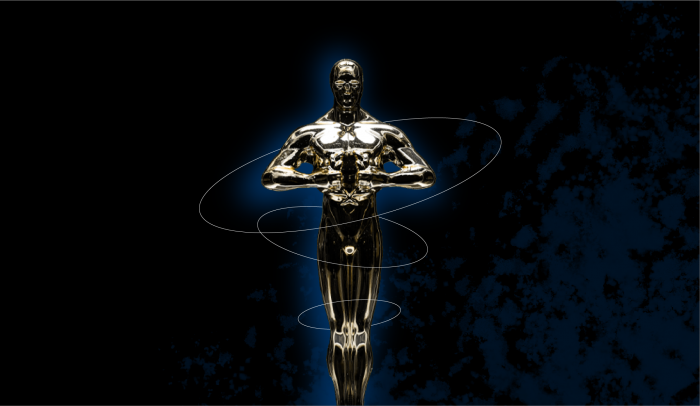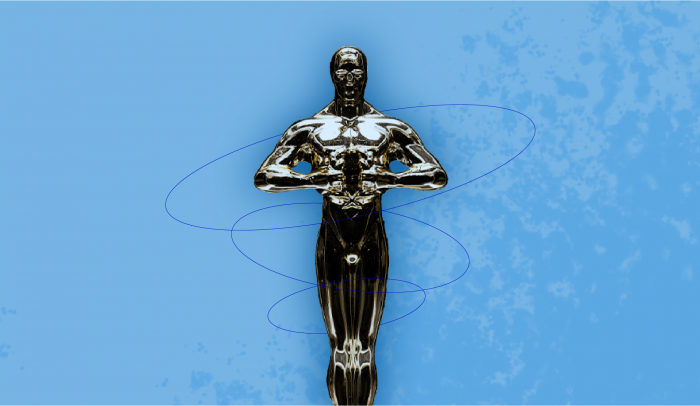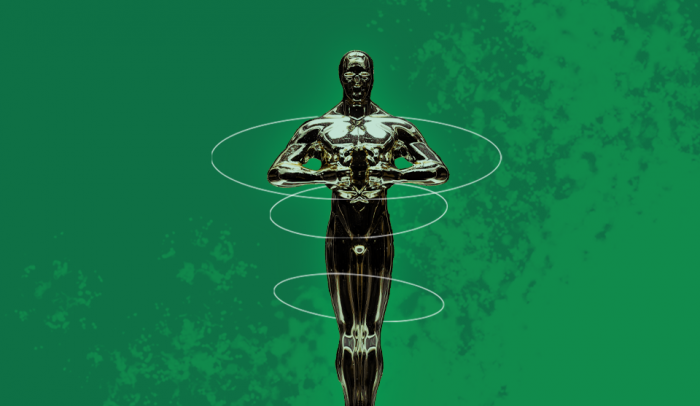Not long ago—only 20 years ago—this wasn’t even an award. There was no such thing as the Oscar for Best Animated Feature.
For much of its history, the Academy was resistant to recognize achievement in animation with its own category. Instead, specific movies—like Who Framed Roger Rabbit or Toy Story—received awards for “special achievement.” There were too few animated movies to justify an Oscars category, and almost all of them came from Disney, anyway.
That changed in 2001. Now, Disney finally has worthy competition in animation, and the Oscars field is wide open. Last year’s victory for Spiderman: Into the Spider-Verse gave animated filmmakers hope—it was a much-needed reprieve from Disney and Pixar’s chokehold on the category. There are four non-Disney films nominated here in 2020, and all of them have a worthy case for the Oscar.
Each week, we’ve broken down one of Oscar’s more visual categories before the ceremony this Sunday. We’ve highlighted the nominees for Best Cinematography, Best Production Design, and Best Visual Effects. Up next: Best Animated Feature.
Animation is at an interesting crossroads in 2020; while new technology allows artists to do more than ever before, there’s a timelessness associated with traditional methods that keeps audiences coming back. Three of the movies’ animations are completely computer-generated, one features stop-motion animation with some CGI, and one is traditionally animated, meaning it was drawn by hand.
Let’s take a look at the nominees.
2019 Winner: Spider-Man: Into the Spider-Verse (Bob Persichetti, Peter Ramsey, Rodney Rothman, Phil Lord & Christopher Miller)
2020 Nominees:
– Klaus
– How to Train Your Dragon: The Hidden World
– I Lost My Body
– Missing Link
– Toy Story 4
Klaus
Sergio Pablos, Jinko Gotoh, and Marisa Román
Klaus won Best Feature at the 2020 Annie Awards, the annual ceremony from the Hollywood chapter of the International Animated Film Association. The first of two Netflix films earning nominations in this category, Klaus delivers a fresh take on the classic Christmas cheer-bringer. Underperforming postman Jesper is stationed on an icy (literally and metaphorically) island above the Arctic Circle, where he’s about to give up until he discovers the mysterious toymaker Klaus.
The animation in Klaus is a joint effort from The SPA Studios and Atresmedia Cine. SPA is a Spanish studio founded by the film’s director, Sergio Pablos, who also created the story for Despicable Me. Whereas most animated films today are computer-animated, Klaus is traditionally-animated—meaning all frames in the film were drawn by hand.
“I miss the freedom and spontaneity of traditional animation,” Pablos said. “Don’t get me wrong, I love CGI when it’s well made. But there’s no denying that there’s a unique quality to hand-crafted animation when done by a great artist.”
Traditionally animating the film gave Pablos and his crew the ability to apply technological advancements to a classic technique, one that’s been used since the early 1900s. With Klaus, Pablos and his team developed a new film using old methods, but it feels as fresh as ever.
How to Train Your Dragon: The Hidden World
Dean DeBlois, Bonnie Arnold, and Brad Lewis
The third and final movie in a trilogy, The Hidden World completes the series loosely based on the book series by Cressida Cowell. In The Hidden World, when Hiccup discovers that his dragon Toothless isn’t the only one of his kind, he must seek a secret Dragon Utopia before an infamous dragon hunter can find it first.
While this is DreamWorks’ 12th nomination in this category, second-best to Pixar among major animation studios, the studio has struggled to earn victories. Only one of its films has actually won the Oscar: Shrek in 2001, the first year of the category’s existence.
The studio debuted a powerful new technological advancement for The Hidden World: MoonRay, a path-tracing renderer that calculates light as it behaves in the real world. The new technology dramatically expands the possibilities for animators to produce authentic film lighting. MoonRay was required to convey the grand scale of the Hidden World, so it was rushed into production. “Some of these shots are really epic with the number of characters on screen,” director Dean DeBlois said. “And previously [without MoonRay], it would’ve been impossible to do, because the rendering time on the back end wasn’t feasible.”
DeBlois has earned a nomination in this category for each of the three Dragon movies, moving him into an eight-way tie for most-ever nominations in this category.
I Lost My Body
Jérémy Clapin and Marc du Pontavice
Fresh off a win for Best Indie Feature at the Annies (and fresh off becoming the first-ever animated film to win the Critics’ Week Grand Prize at Cannes), I Lost My Body might be one of the lesser-known features in the category. However, it packs as potent a punch as its fellow nominees. A French film from Netflix, I Lost My Body tells the story of a severed hand that escapes its fate in a Parisian laboratory and sets out to reconnect with its body, that of a boy named Naoufel. The movie also follows Naoufel and his relationships from the past, before he lost the appendage. Originally made in French, Netflix created an English-dubbed version that’s been streaming since November.
CG animation for the film was done by Xilam, a French production company that specializes in the technique. Producer Marc du Pontavice said that the film could only have worked with computer-generated graphics. “CG is very helpful in that sense because the models are credible, and it was very important that the audience fairly quickly forget that this is animation,” he said. “The idea is throughout the experience of the film, they should feel almost as if they were real actors, and only CG could provide that experience.”
Director Jérémy Clapin made his feature directorial debut with this movie—he is more well-known for his work on shorts and commercials. Clapin deserves a ton of credit for making a compelling lead character that experiences emotions and goes on adventures out of a disembodied hand that obviously doesn’t speak.
Missing Link
Chris Butler, Arianne Sutner, and Travis Knight
The only stop-motion animation nominee, Missing Link follows Mr. Link, a living testament to the ancestry of the human race, who recruits an explorer to help him find his long-lost relatives in the fabled valley of Shangri-La. Missing Link stunned audiences when it scored a surprise victory for Best Animated Feature Film at the Golden Globes. Does it have the momentum to pull off another upset?
Stop-motion studio LAIKA does the animation work for this film. The studio utilized custom 3D-printed faces for every character in every shot of the film to allow for more unique expressions. This marks the first time LAIKA had used this technology—previously, filmmakers relied on “face kits,” sets of interchangeable facial expressions for each character that would be swapped out based on the scene. The studio says that 325 of the 1486 shots in the film required computer-generated animation paired with stop-motion, a marriage of hand-craftsmanship and technology.
Englishman Chris Butler gets his second directorial credit for Missing Link, and it’s his second Oscar nomination in this category—he earned his first for directing ParaNorman. Additionally, Butler wrote for those two films, and a third film he wrote—Kubo and the Two Strings—also earned an Oscar nomination in 2016.
Toy Story 4
Josh Cooley, Jonas Rivera, and Mark Nielsen
It absolutely smashed the box office and made full-grown adults well up in tears. Simply reciting his character’s lines into the microphone reduced Tom Hanks to an emotional puddle. Toy Story 4 is the conclusion (we think?) of the saga of Woody, Buzz, and the rest of the lovable cast of toys. Pixar is expected by many to continue its absolute domination of the Best Animated Feature category, as the studio has 13 nominations and has won nine of 18 possible Animated Oscars.
An experienced storyboard artist who started at Pixar as an intern in 2004, Josh Cooley made his directorial debut with Toy Story 4. One of the things that excited him the most about TS4 was the expansion of the toys’ world and the new production designs that came with it. “Toy Story has a caricatured world where everything is designed from the toy’s point of view,” Cooley said. “We really wanted to expand the world as much as possible. So, going outside of the tri-county area was huge.”
One of Cooley’s biggest challenges? The fact that technology has advanced to the point that some of the movie’s shots were too realistic. “At times, we have to pull it back—it’s too real,” he said. “One thing we learned from the first three films was to keep the lighting more stage-like so that it feels presentational.”
Surprise, surprise: TS4 is a heavy favorite to win the category. Don’t be shocked if you see the rookie director up on stage Sunday night for yet another Disney victory.



